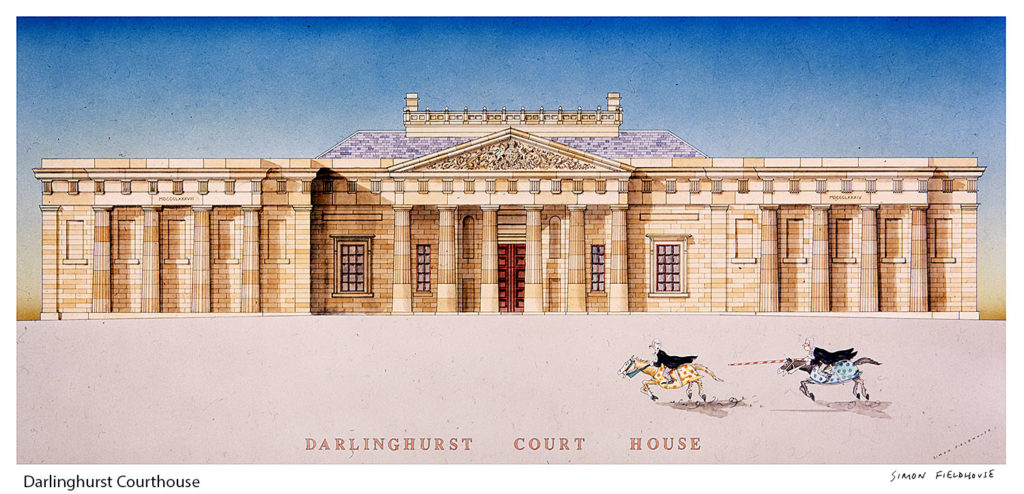
Darlinghurst Courthouse
Darlinghurst Courthouse was aligned to face directly onto Oxford Street, and became the defining feature of the entire space on the top of Darlinghurst Hill. Even before it was finished, it had been used as a church by people living along the South Head Road. It had also served as the venue for other community functions, such as the town's annual St Patrick's Ball, a 'gay and festive scene' attended by some 300 to 400 people in 1840.
While the courthouse redefined the streetscape at Darlinghurst Hill, it also brought with it greater regulation of the street itself. For instance, one of the enduring problems in mid-nineteenth-century Sydney was the abundance of animals on the streets. All manner of beasts from goats to cows, and literally hundreds of dogs, could be seen even on the city's busiest streets. Along the South Head Road, cattle had for years wandered, seemingly at random, onto neighbouring land. This continued even after the courthouse was built, so that in the 1840s there were still cows grazing under the very pillars that were meant to denote law, order and authority. The irony of the lawyers and judges and the whole paraphernalia of the law – the wigs, gowns, leather-bound tomes – keeping such bovine company was no doubt appreciated by the lower orders, many of whom frequently found themselves before this very court. Eventually the matter was taken in hand by fencing off the courthouse in 1849 and imposing more stringent regulation of people who kept animals and used the road.